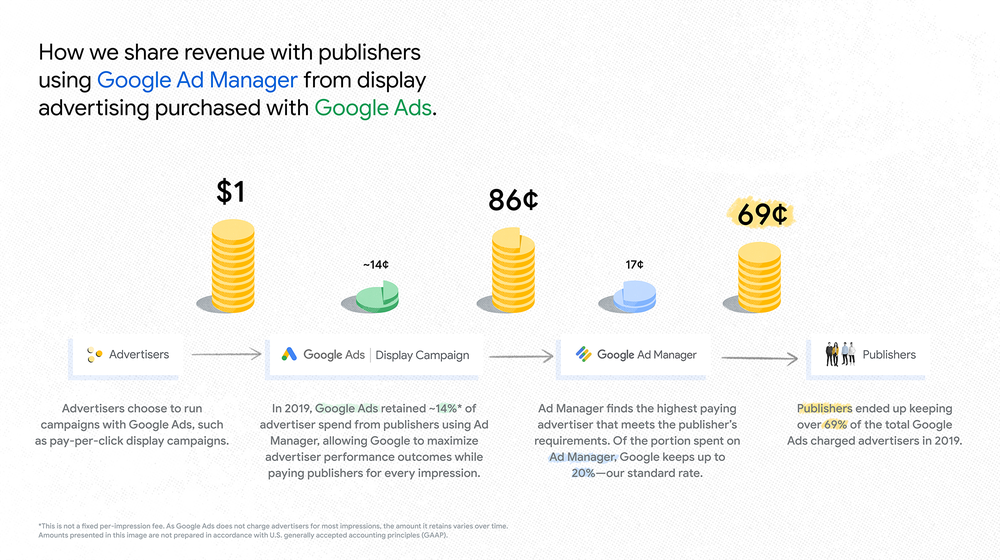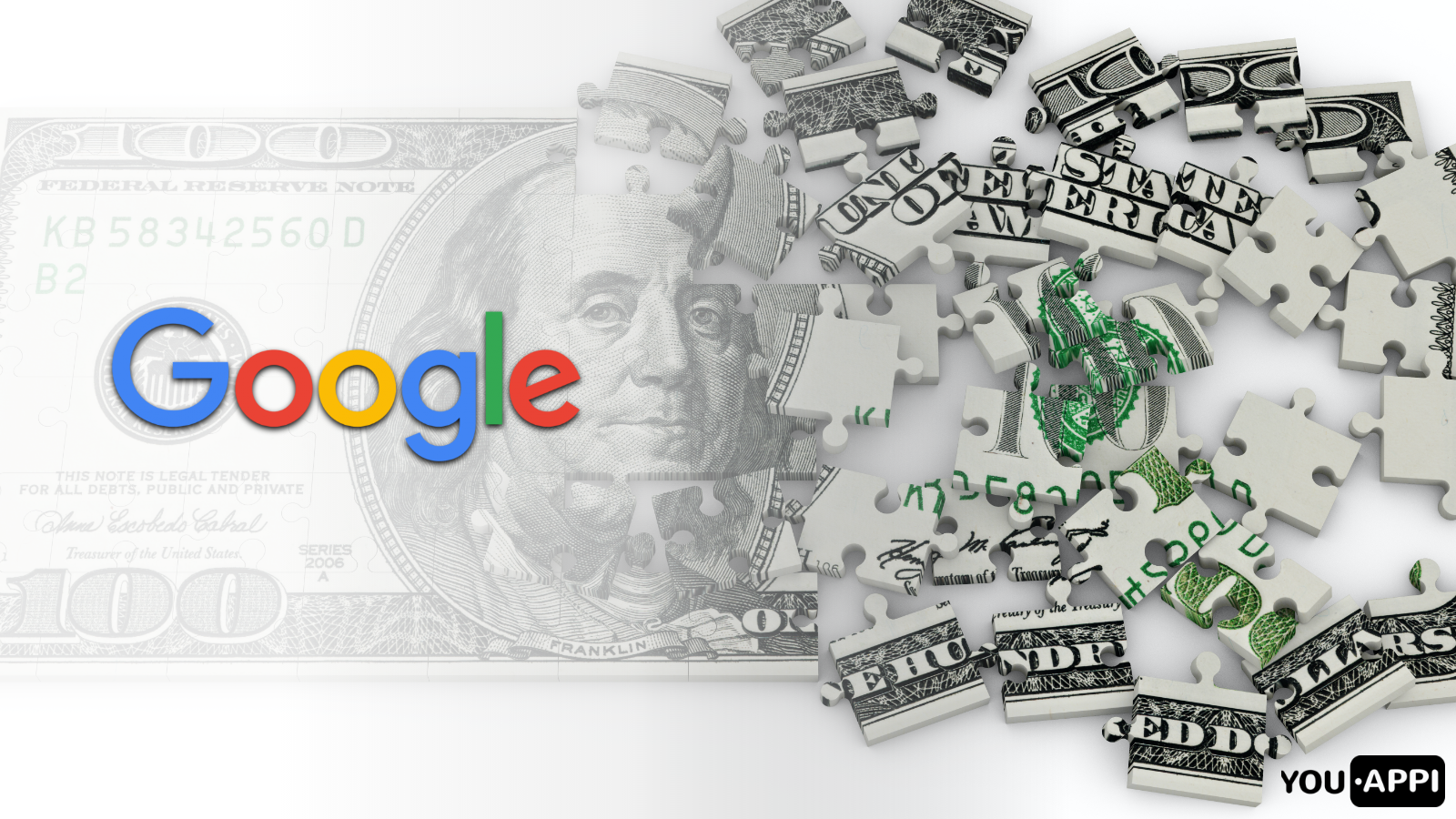Last month Google released its fees across its advertising buying services in a strategic effort towards greater transparency. This included sharing take rates for Google Ads, Display & Video 360 (DV360), and its publisher tech, Google Ad Manager.
According to Google’s blog post, it takes 31% of media spend from campaigns managed through its ad network. Put simply, of $1 spent by an advertiser that starts and ends with Google tech, publishers receive 69 cents (69%) and Google takes the rest.

Source: Google
Google takes a different cut from campaigns run across its individual services. This includes 13% from its DV360 service, 18% from Google Ad Manager, and 14% from Google Ads. These figures are based on aggregate 2019 data. It’s unclear whether take rates across services fluctuate year to year.
The firm also revealed that it sells about 75% of ad inventory directly, and 25% programmatically. While Google takes just 1% from publishers that buy directly, those who buy programmatically pay 16%. Google also revealed that it takes around 5% of publishers’ overall revenue.
Some Things to Note About Google’s Announcement
For Google Ads buyers, the revelations of Google’s fees may be surprising given the firm’s historical secrecy around its take rates. However, for DV360 buyers, the 13% fee may be less shocking since those buyers negotiate with Google directly about fees in their contracts.
These revelations only account for what happens when an impression flows completely through Google’s tech start to finish. In situations in which an impression is sold through a different DSP like the Trade Desk but then bought through Google Ad Manager by a publisher, Google might lower its fee when it takes a double cut.
The point is that Google is still not giving insight into its fees in the many different configurations that an impression might be bought or sold on its ad tech services. Furthermore, Google has refrained from revealing details of the spend attribution within its header bidding and AdSense products, which remain under lock and key.
Why Google is Giving Insight into its Fees
Antitrust investigations against Google have been gaining steam since last fall. In September, attorney generals from 50 states and territories announced an antitrust investigation into Google’s advertising and search businesses. Simultaneously, the Justice Department opened its own broad antitrust review into Big Tech (Apple, Facebook, and Amazon face similar inquiries). This review has reportedly focused on Google, with the Justice Department working closely with the state-level investigation. Last September Google reported it had been asked to provide information to the federal agency.
The timing of Google’s announcement could be a response to ongoing antitrust investigations. Specifically, Google is acting in anticipation of antitrust charges that could be filed as soon as this summer. The government is allegedly building a case against Google for ‘anti-competitive’ behavior. This includes the search engine effectively ‘monopolizing’ the digital ad market. Logically, this would mean Google’s ad tech fees could be reviewed as part of the case. Disclosing the details of its ad fees could certainly help make Google appear less opaque in the face of legal action.
What it Means For Mobile Marketers
Google’s actions follow a broader push for transparency in the programmatic ecosystem. Their announcement came on the heels of Apple’s announcement of changes to the IDFA and calls for greater transparency into Facebook’s vetting of information on its platforms.
There is an opportunity for Google and its own device ID in the face of Apple’s deprecation of its IDFA. While it is a self attributing network (SAN), google devices continue to support device IDs in ad campaigns outside of the google advertising engine (Google Play Store). Globally, Google Android remains the market leader with a 51.8% share of the smartphone market. If Google doesn’t create an opt-in tracking mechanism for Android, install attribution will continue to exist to serve the Android market. With Apple’s IDFA restrictions and current global market share, there is an opportunity for Google to grow in advertising going forward.
Finally, with antitrust charges looming, marketers should be aware of legal pressure that could lead to changes in Google’s fee structure. In the past, other ad tech companies have shared their fees openly, leading to slashed rates in some cases. For example, after AppNexus and Rubicon Project openly gave their take rates, both players slashed their fees after feedback. The Trade Desk also began sharing its fees on a yearly basis.
Takeaways
In June, Google released its fees across its advertising buying services. This included take rates for Google Ads, Display & Video 360 (DV360), and its publisher tech, Google Ad Manager.
- When an advertiser spends $1 using Google tech, publishers receive 69 cents (69%) and Google takes the rest (31%).
- Google takes a different cut from campaigns run across its individual services. This includes 13% from its DV360 service, 18% from Google Ad Manager, and 14% from Google Ads.
- The revelations come as Google anticipates antitrust charges filed by the Justice Department in tandem with a state-level investigation.
- Google’s actions follow broader calls for transparency in the programmatic ecosystem. Most DSPs have started openly sharing their take rates in an effort to illuminate “hidden fees”.

